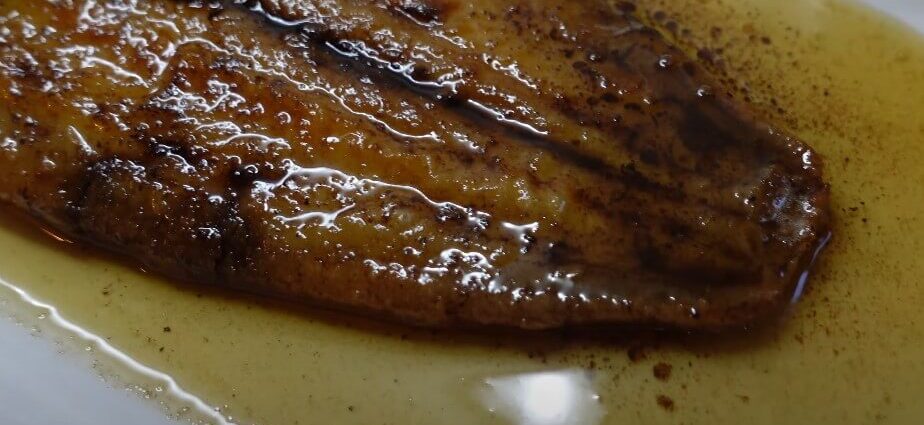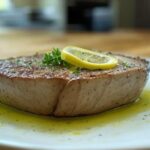French cuisine has a special place in my heart. I grew up watching my grandmother in her kitchen, tossing butter into pans and whisking sauces with the sort of casual grace I always envied.
Seafood dishes, in particular, enchanted me from an early age. Aromas of sizzling fish, tangy hints of lemon, and the comforting warmth of hearty broths still remind me of cozy family gatherings.
You can imagine my excitement when I finally mastered a few classic French fish recipes. They’re easier than most people suspect, yet they carry an air of refinement that feels almost magical.
Today, I’m going to chat about three favorites: Sole Meunière, Bouillabaisse, and a take on Trout Almondine. I promise none of them demand professional skills.
If you’re a home cook looking to bring that beloved bistro ambiance into your dining room, you’re absolutely in the right place. Let’s roll up our sleeves and share some kitchen wisdom.
Essential Elements for a French Seafood Feast
Before going into specific recipes, let’s touch on the main elements:
- Fresh Fish: Quality seafood is the star. Pick fish with clear eyes, firm flesh, and a clean smell.
- Aromatics & Herbs: Garlic, onion, fennel, parsley, thyme, and occasionally citrus zest. They transform a simple broth into something transcendent.
- Butter & Oil: Butter is practically a love language in French cooking. A mix of olive oil and butter often creates a rich yet balanced result.
- Wine: A splash of wine can add depth. White is common, but a light red can also be delightful in certain contexts.
- High-Quality Stock: A solid broth is the backbone of soups and stews like Bouillabaisse. If you have fish bones, simmering them for stock can really up your game.
Use your senses. If something seems off or underseasoned, adjust on the spot. The best cooks trust their instincts.
Sole Meunière
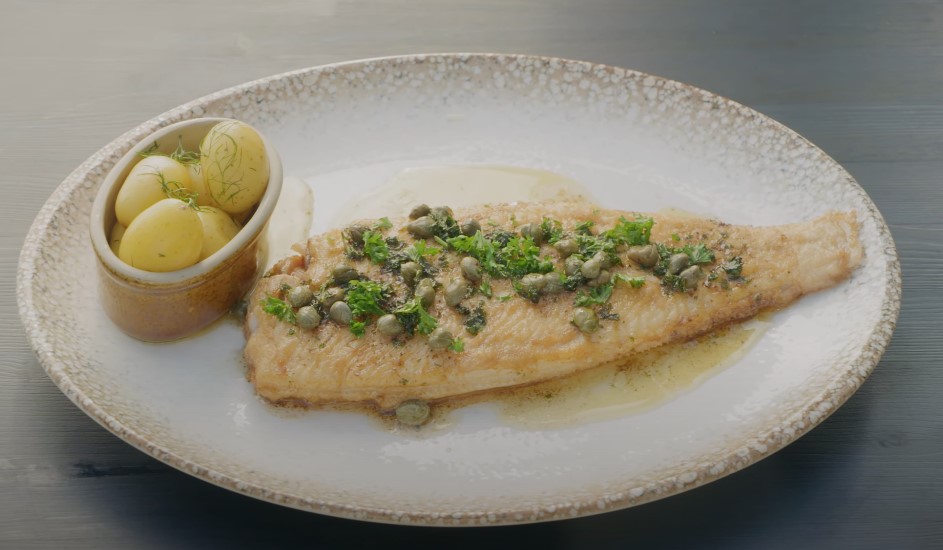
Sole Meunière was once my first big “aha!” moment in French seafood. It’s one of those dishes that’s deceptively easy yet exudes elegance.
Tender sole fillets get lightly coated in flour, then sautéed in butter until they glisten with a subtle golden hue. A bright lemon-caper sauce brings it all together.
Ingredients
| Ingredient | Quantity |
| Dover or lemon sole fillets | 2 (trimmed, heads/tails removed) |
| Seasoned flour | 3 tbsp (salt and pepper to taste) |
| Unsalted butter | 150g (at room temperature) |
| Olive oil | 2 tbsp |
| Drained capers | 2 tbsp |
| Lemon | 1, halved |
| Chopped parsley | 1 handful |
| New potatoes | 400g |
| Trimmed French beans | 120g |
Instructions
- Pat the sole fillets dry, then give them a quick dredge in the seasoned flour. Shake off any excess so the crust doesn’t turn gummy.
- Bring a pot of salted water to a boil, then toss in the new potatoes. Cook them for about 20 minutes or until a knife slides right in.
- Heat the olive oil and half the butter in a frying pan. Pop in the fillets and let them sizzle. Give each side around 4 to 6 minutes, depending on thickness, or until they’re a warm golden brown. Keep them snug in a preheated 200°C oven (that’s about 400°F) so they don’t go cold.
- Meanwhile, drop the French beans into boiling water for about 4 minutes. You want them vibrant and crisp-tender.
- Melt the remaining butter in the pan where you cooked the fish until it starts turning a nutty brown. Squeeze in the lemon juice, toss in the capers, and stir gently.
- Plate your fish, drizzle the sauce on top, and sprinkle the parsley for a final flourish. Serve with the potatoes and beans.
Bouillabaisse
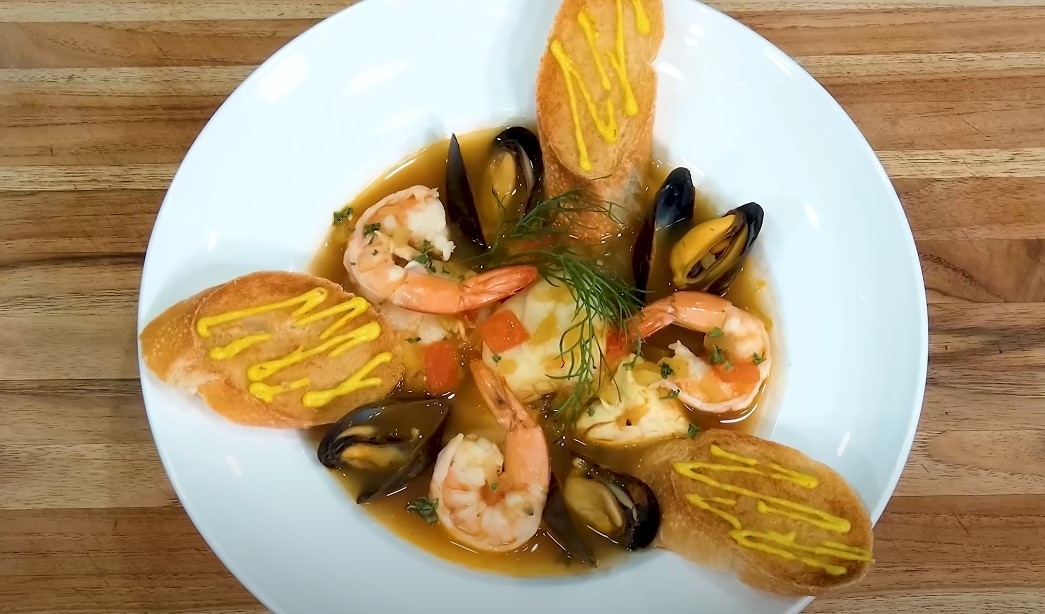
Bouillabaisse is legendary. Friends often panic over it, picturing complicated procedures or exotic fish they can’t even name.
It might be one of the world’s most celebrated seafood stews, but cooking it at home is surprisingly straightforward once you have the right ingredients on hand.
A good Bouillabaisse typically starts with a mix of fish and shellfish, simmered with aromatics in a fragrant broth.
The finishing touch is a sauce rouille—a bright, spicy spread—that gets dolloped on toasted bread and dunked into the soup. It’s communal, hearty, and absolutely perfect for gatherings.
Ingredients
| Ingredient | Quantity |
| Mixed white fish | 500g (sea bass, halibut, etc.) |
| Shellfish (optional) | 500g (mussels, shrimp, clams) |
| Leeks | 2, thinly sliced |
| Onion | 1, finely chopped |
| Fennel bulb | 1, chopped |
| Garlic cloves | 4, minced |
| Canned tomatoes | 400g, chopped |
| Salt and pepper | To taste |
| Bay leaf | 1 |
| Dried thyme | 1 tsp |
| Orange zest (optional) | From 1 orange |
| Fish stock or clam broth | 2 cups |
| Olive oil | 2 tbsp |
| For sauce rouille: | – |
| Hot fish stock | 1/2 cup |
| Garlic cloves | 2 |
| Hot pepper | 1 small (chili style) |
| Olive oil | 1/4 cup |
| Salt | To taste |
| Bread slice | 1 (crust removed) |
Instructions
- Get the sauce rouille ready first. Blend hot fish stock with garlic, the small hot pepper, olive oil, salt, and a slice of bread until you have a creamy consistency. Set it aside for later.
- In a big pot, sauté leeks, onion, and fennel in olive oil until they soften. Add the minced garlic, canned tomatoes, salt, bay leaf, thyme, and optional orange zest. Let everything mingle and cook for about 5 minutes.
- Pour in the fish stock and bring it all to a gentle boil. Slide in your chunks of white fish and simmer for around 10 minutes.
- If you want shellfish, drop them into the stew for an extra 5 minutes or so. Any shells that fail to open should be discarded. Season as needed with a bit more salt and pepper.
- Serve in deep bowls. Toast some bread, spread the sauce rouille on top, and dunk it into your bowl for an extra zing.
Trout Almondine Variation (Celery, Pistachios, and Garlic)
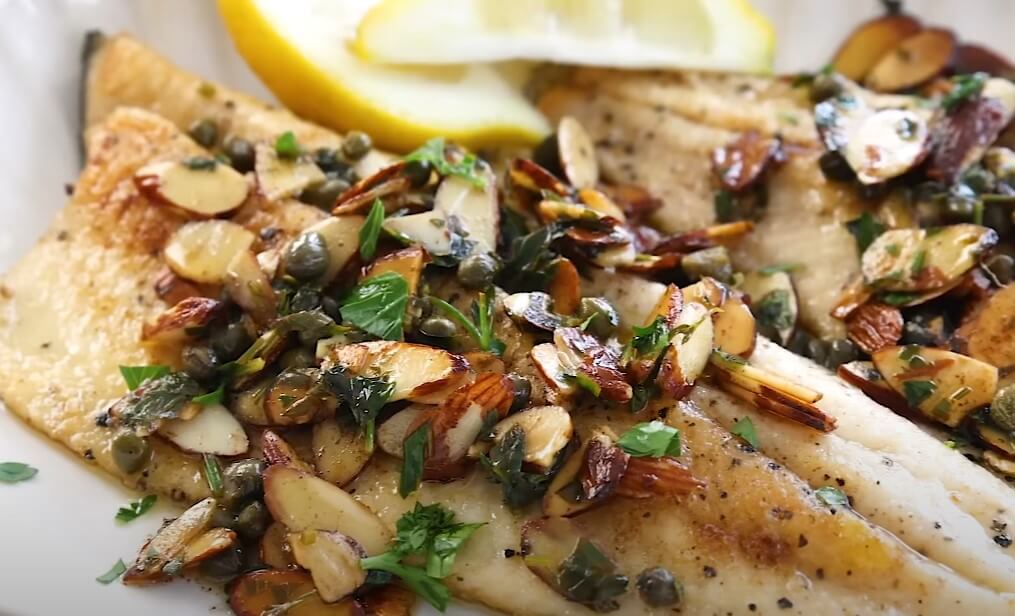
Trout Almondine is typically made with almonds, butter, and lemon. There’s a variation I discovered while traveling near the French Pyrénées that swaps almonds for pistachios and adds a dash of celery and garlic.
The crunchy texture and slight peppery twist make it an unforgettable dish for two.
Ingredients
| Ingredient | Quantity |
| Boned, pan-dressed trout | 2 (8-ounce, heads/tails optional) |
| Salt and pepper | To taste |
| 2% or whole milk | 1/4 cup |
| All-purpose flour | 1/4 cup |
| Vegetable oil | 2 tbsp |
| Unsalted butter | 2 tbsp |
| Celery rib | 1/2 cup, very thinly sliced |
| Garlic cloves | 3, peeled, thinly sliced |
| Snipped fresh parsley | 1 tbsp |
| Pistachio kernels | 2 tbsp, coarsely chopped |
| Crushed red pepper flakes | 1/4 tsp (optional) |
Instructions
- Give the trout a quick rinse and pat it dry. Season with salt and pepper all over.
- Dip the trout in milk, then coat it in flour. Make sure you shake off extra flour so it doesn’t clump.
- Heat vegetable oil in a skillet over medium. Lay the fish in gently. Cook each side for about 6 to 8 minutes, or until it looks flaky and lightly browned. Transfer to a warm plate.
- Wipe the skillet clean, then melt butter. Stir in the sliced celery and garlic, letting them soften and get a little color.
- Toss in the parsley, pistachios, and a pinch of red pepper flakes if you like a hint of heat.
- Spoon that mixture over the trout. Enjoy immediately.
Practical Advice for Home Cooks
View this post on Instagram
- Keep It Fresh: The fish should be fresh enough that it smells like the sea, not fishy.
- Don’t Rush: A little patience with sautéing can make a big difference in browning and flavor.
- Taste, Taste, Taste: Always sample the sauce or broth. A pinch of salt at the right moment elevates everything.
Pairing Wines
- For Sole Meunière: A crisp Pinot Grigio or Sancerre is classic. Some prefer a lightly chilled red, though, so feel free to experiment.
- For Bouillabaisse: A dry rosé from Provence or a crisp white with good acidity often works wonders.
- For Trout Almondine Variation: Try a light red like Beaujolais, or keep it mellow with a Chardonnay.
Summary
French fish recipes aren’t out of reach. Sole Meunière, Bouillabaisse, and Trout Almondine each reveal a classic approach that highlights the natural goodness of seafood, brought alive through butter, aromatics, and thoughtful seasonings.
A home cook with basic skills can pull off a high-end bistro meal right in the comfort of a cozy kitchen. I hope you’ll give one (or all) of these recipes a go soon.
They’ve brought me countless memories, and I’m convinced they’ll do the same for anyone else who tries them. So pop open a bottle of something nice, gather your favorite people around the table, and enjoy a bit of French flair without leaving home. Bon appétit!

